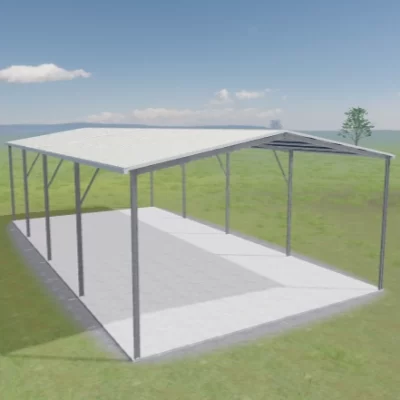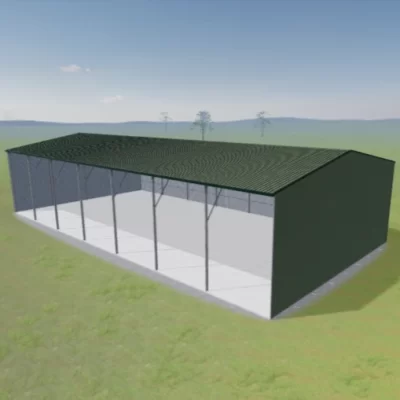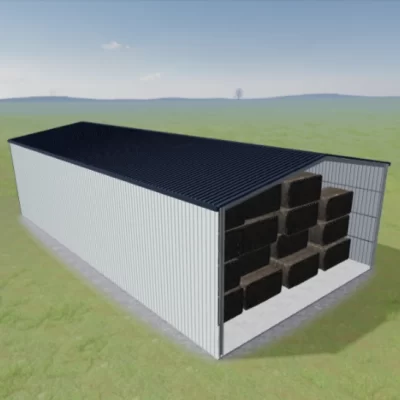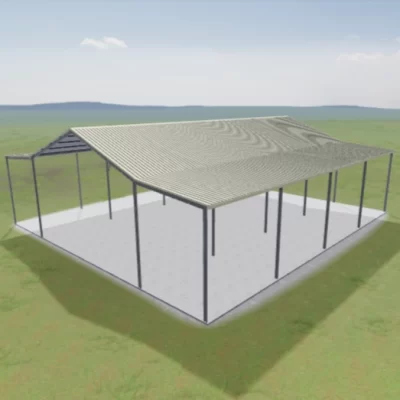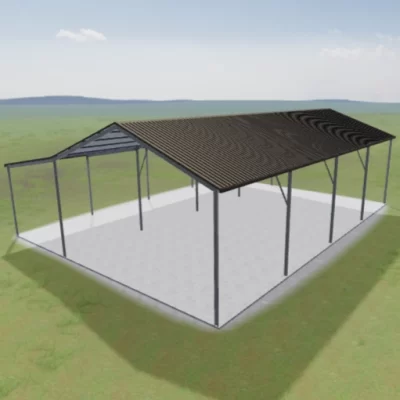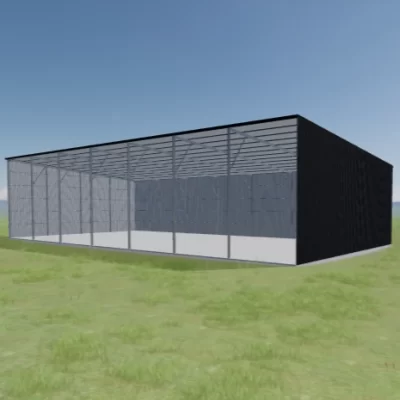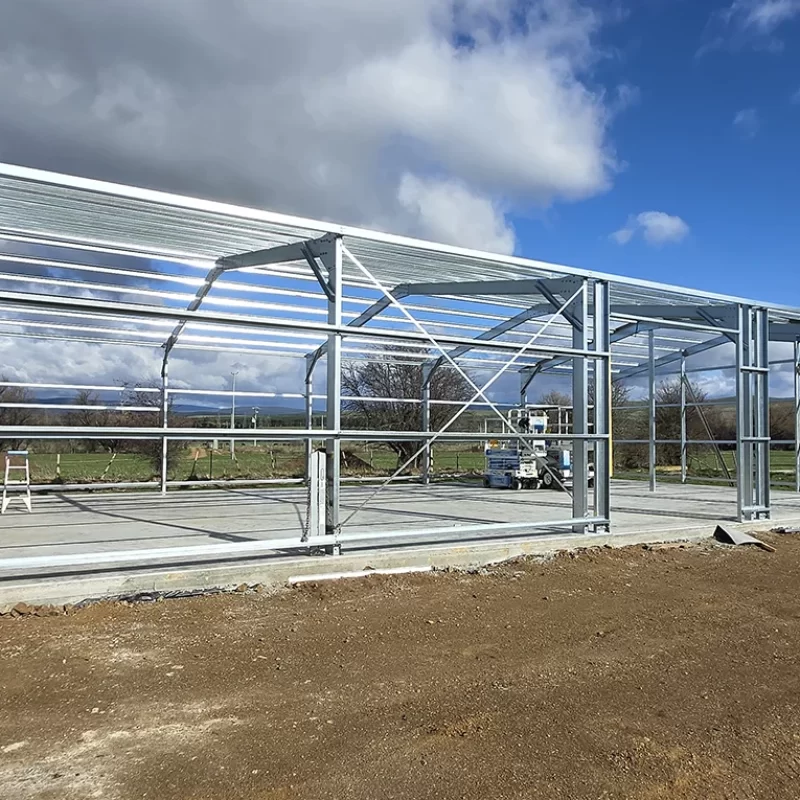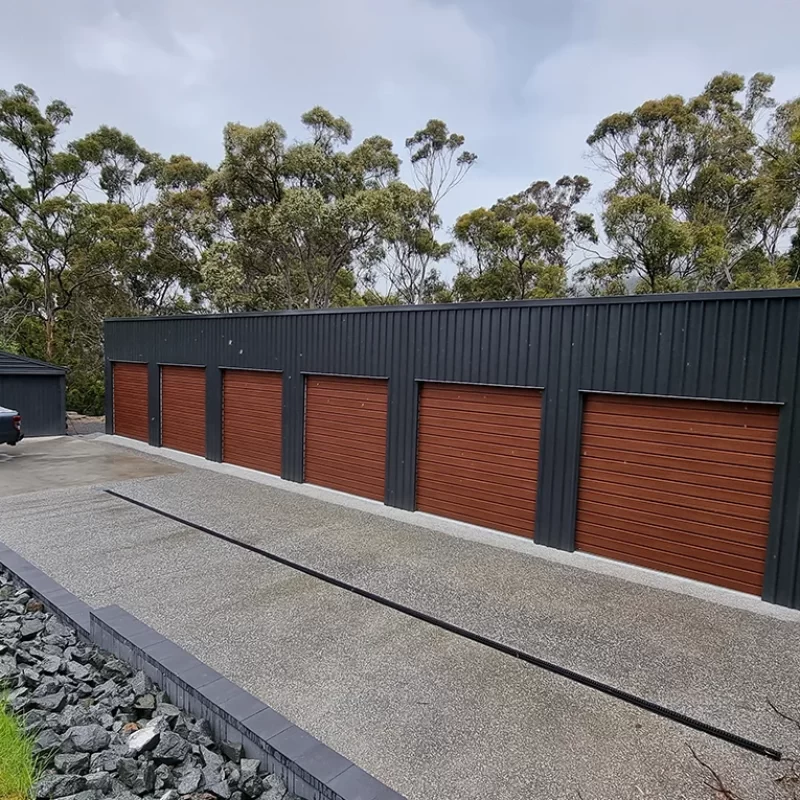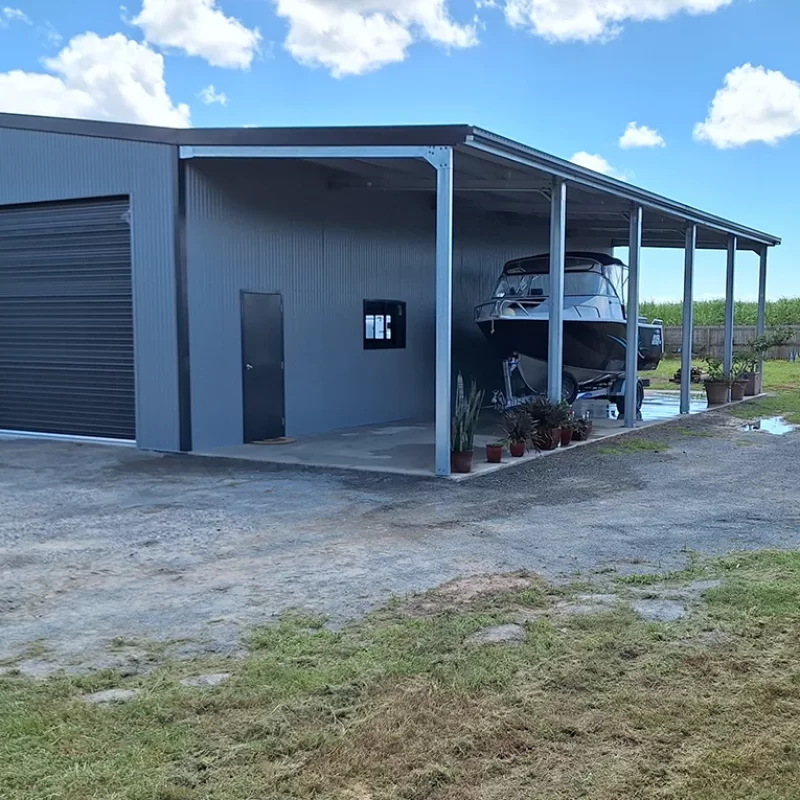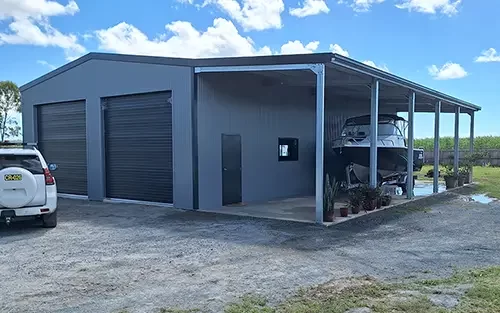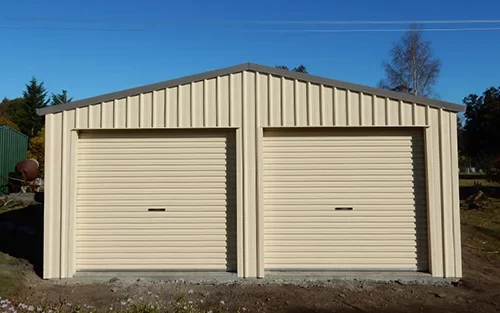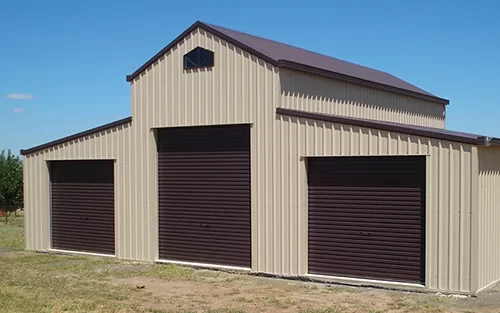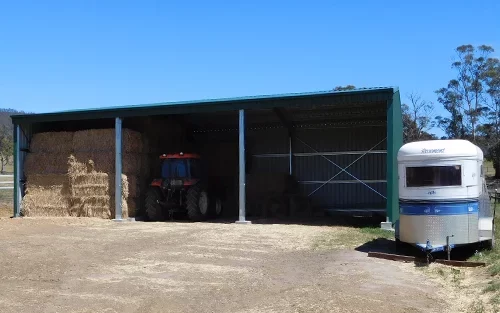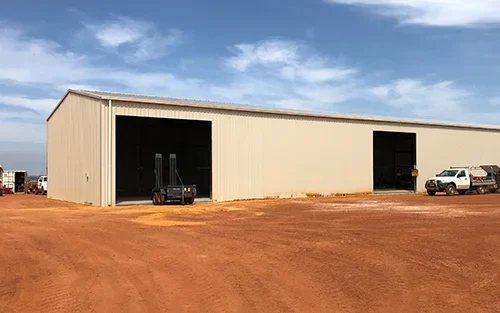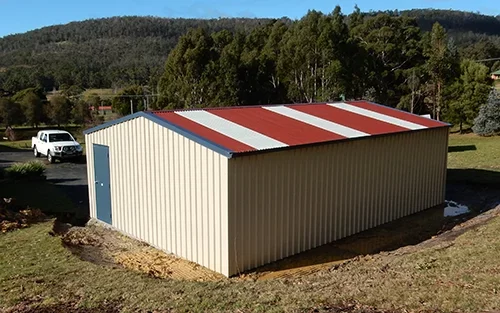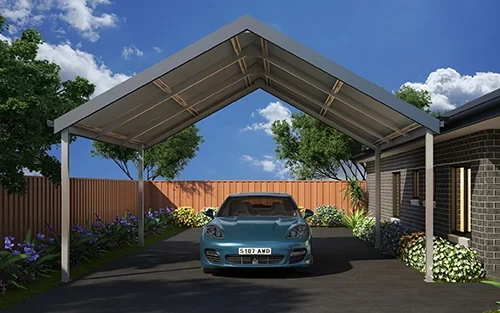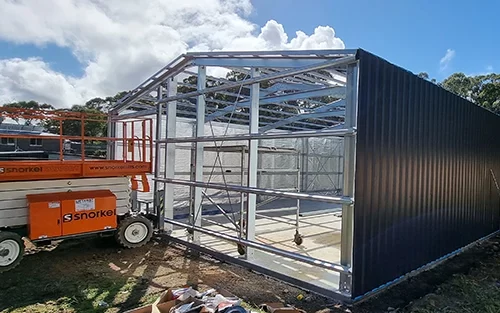Hay Sheds – Built Tough with COLORBOND® Steel

Quality Hay Sheds designed, built and delivered Australia-wide
100% Australian Made
Built with Australian BlueScope® steel and Colorbond® cladding.
Local Engineering
Engineered and designed to suit your site and local wind conditions.
Free Delivery
Enjoy free delivery to most major populated areas nationwide.
Fast 24-Hour Quotes
Receive a personalised quote quickly—within just 24 hours.

Ashley Barrett - Managing Director
With over 12 years of experience designing and selling high-quality Australian-made sheds, I’m proud to lead True Blue Sheds. As a ShedSafe accredited business, we are committed to offering competitive prices and outstanding customer service, with over 1000+ satisfied customers. Learn more about us!
Hay sheds are essential for protecting your valuable hay bales from moisture, sun exposure, and other damaging weather. At True Blue Sheds, we supply heavy-duty, Australian-made hay storage sheds designed to keep your feed dry, safe, and well-ventilated all year round.
We custom-design every hay shed using premium BlueScope® steel, with the option of Zincalume® or Colorbond® cladding. Our sheds are engineered to meet your specific wind region and site conditions and are built to comply with all relevant Australian standards. Whether you need an open-front, three-sided, or fully enclosed hay shed, we customise the size, layout, roof pitch, and bay configuration to suit your farming needs.
With proper airflow and drainage, our hay sheds help prevent mould, reduce hay spoilage, and keep your feed in top condition. Proper ventilation also reduces the risk of spontaneous combustion, which can occur when damp hay heats up in enclosed spaces. Designing your shed to allow for natural airflow between and around bales is a critical step in fire prevention.
Our most popular hay shed is a 12 x 24 metre, three-sided open-front shed with 4 x 6m wide bays and a height of 4.2m—ideal for storing both round and square hay bales while still allowing easy machinery access. We can design any layout to suit your bale size, storage volume, and loading requirements.
Whether you’re a small-scale livestock owner or operating a large agricultural enterprise, True Blue Sheds can design a hay storage solution that delivers long-term protection to your valuable stock feed.
Read More

Ashley Barrett - Managing Director
With over 12 years of experience designing and selling high-quality Australian-made sheds, I’m proud to lead True Blue Sheds. As a ShedSafe accredited business, we are committed to offering competitive prices and outstanding customer service, with over 1000+ satisfied customers. Learn more about us!
Real Customer Experiences
Why customers love True Blue Sheds
Don't just take our word for it. Here's what real shed owners have to say about their True Blue experience
Rob Johnson
Bendigo
Dave Miller
Outside Emerald
Mic Gardner
Albany
Sarah
Singleton NSW

The Wilson Family
Bunbury
Your Perfect Hay Shed in 3 Easy Steps
Dream it. Design it. Build it.
Bring your ideas to life with our easy-to-use online shed designer
Imagine Your Ideal Shed
1. Dream it.
Get creative with our easy-to-use online designer. With unlimited design options at your fingertips, your dream shed is just a few clicks away.
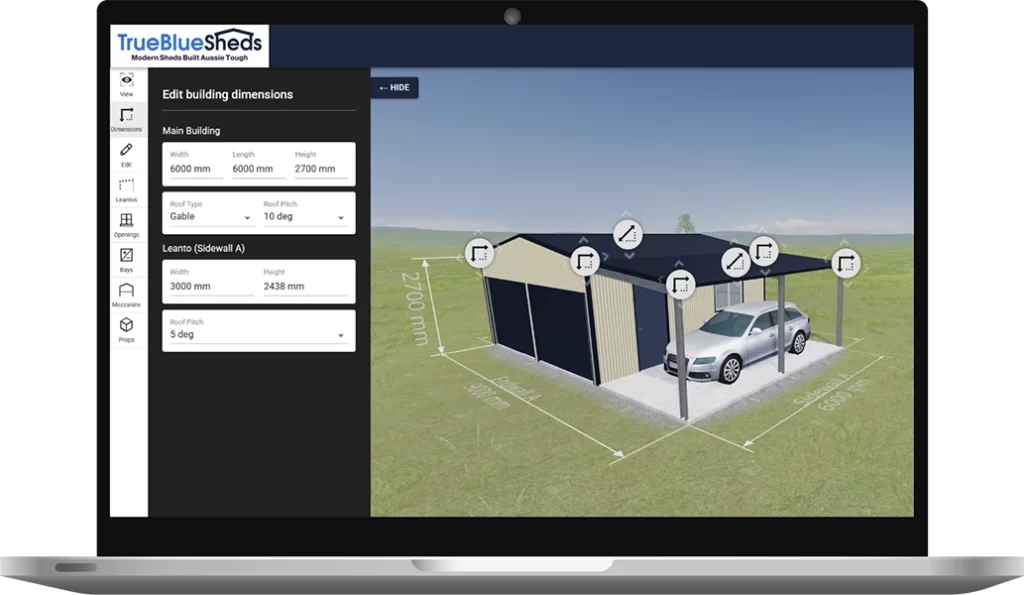
Customise Every Detail
2. Design it.
Choose from our popular starter templates below to quickly begin customising your shed. Or, start from scratch and create a design that's uniquely yours.
Choose from our popular starter templates below to quickly begin customising your new shed.Or, start from scratch and create a design that's uniquely yours.
Your Dream, Our Craftsmanship
3. Built it.
Explore completed projects and get inspired by real sheds we've built for customers just like you.
Real-Life Inspiration
Real sheds, real customers
Discover sheds we've proudly supplied to customers across Australia, and find inspiration for your own project.
- 1 x Personal door, 4 roller doors, Skylights
- 1 x Personal door, 6 Wood grain roller doors
- 2 Roller Doors, 2 Personal Access Doors and 4 Windows.
Still Exploring?
Explore our complete range of steel buildings
From compact garages to industrial warehouses, we've got you covered.
Latest news, tips & shed inspiration
Got Questions?
Get your Hay Shed questions answered here
What factors should I consider when building a hay shed?
Think about how much hay you’ll be storing and for how long. Ventilation, roof pitch, access, bay widths, and site drainage are also important considerations for maintaining the quality of your hay over extended periods.
Are your hay sheds made from quality Australian materials?
Yes. All our hay sheds are made from 100% Australian BlueScope® steel with your choice of genuine Colorbond® or Zincalume® cladding.
Can I customise the size and configuration?
Absolutely. Choose the width, length, height, number of bays, roof style, and optional extras to create a building that will protect your produce for decades to come.
Do I need council approval for a hay shed?
Not always. In many cases, farm sheds are exempt from planning and building applications if your land and intended use meet certain conditions. We recommend speaking directly with your local council to see what exemptions apply in your area.
What is the typical delivery time?
Delivery usually takes 4–7 weeks, depending on your location and how close you are to one of our 26 consolidation centres across Australia.
